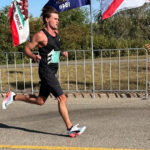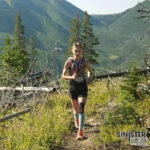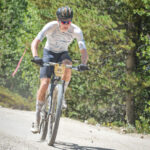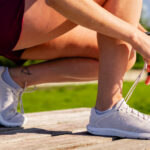If you’ve got a fall race on the calendar, it’s the perfect time to start thinking about your race day shoes. Unlike your daily trainers, racing shoes are built for performance — they’re lighter, faster, and often give runners a psychological edge when it matters most.
This week, Brainsport manager Lisette Schermann breaks down what makes a great race shoe, how to choose the right pair for your goals, and shares her top picks across distances and budgets.
What do we mean when we talk about race shoes and why should runners get a pair?
Race shoes differ from training shoes in a few ways: they’re typically lighter, often use more advanced and energetic midsole foams, and many include a carbon plate for added propulsion. This combination helps reduce fatigue and improve efficiency, especially at higher speeds. However, these features come at a cost — race shoes tend to be more expensive and less durable than everyday trainers. Because of this, it just isn’t practical to wear these shoes for all of your training. The super energetic foams they use break down over time and the shoe loses its magic energy return.
Sometimes, the race day shoe won’t have as much stability as a training shoe. That could be fine for a limited number of miles, but trouble if you use it for big training volume. For that reason, most runners will train in a more durable shoe (or collection of shoes) and they’ll save the race day shoe for a few practice runs and the race itself.
Runners put a lot of effort into training, and when the big event comes along, they might pick a race day shoe so they feel extra fast on the big day. It isn’t so much about winning the race as it is about having the best possible run at the event that may or may not be the pinnacle of their training. I often use the analogy of wearing a special outfit for a special day. You might think of a race day shoe as being a party dress, graduation gown and lucky hat all in one.
How far before your race should you purchase your race shoes and how much should you run in them before your race?
There’s no hard rule for when to purchase your race day shoes, or the number of practice runs you’ll want to do. Some of that depends on whether or not you’ve worn that type of shoe before and how they compare to your training shoes. Give the new shoes at least a couple of runs. You’ll know you’re ready if you can run at race pace without having to think about the shoes.
How many races should you plan to run in race shoes?
To help any running shoe last longer, let the shoes dry completely between runs, keep them out of direct sunlight and away from heat sources.
If you take good care of them, you can expect to get a race season out of your party shoes. After that, you might be able to use them for short and fast training runs.
Once the shoes develop deep, permanent creases in the midsole, or if you feel like they’ve lost their bounce, it’s time to start thinking about another pair. If you put the shoes on a flat surface and observe them from behind, they should sit flat and level. If the shoes are starting to lean over, they’ve lost their stability.
Walk us through your top race day picks!
For the marathon: Saucony Endorphin Pro 4

This race day shoe has the comfort and stability you want for a long event like a marathon. You can trust that it has feather light, super energetic foam and a carbon plate, but it also has a great fit and stable shape that you’ll be thankful for at 30km.
For a shorter distance like the 5 or 10km: New Balance Super Comp Pacer v2

This is my go-to shoe for 5-10k road races. It’s got enough protection for pavement, but lots of energy return and a carbon plate to make sure you get the maximum value out of every step. In a short race, every stride counts!
For budget shoppers: Puma Deviate Nitro 3

This shoe is in a league of its own. For the price of a training shoe, you get a lightweight, responsive midsole and a carbon fibre plate. This shoe is a great pick for somebody who isn’t ready to invest in an extra shoe for race day, or for somebody who wants race day responsiveness in their everyday trainer.
An honourable mention pick: On Cloud Monster Hyper

If you want the race day experience, but don’t like carbon plates, there are still some great high-energy options. The Cloudmonster Hyper from On layers durable foam in the heel with high-rebound superfoam in the forefoot for a unique and speedy feeling ride.









